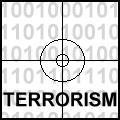In the past eight years of the post-911 terrorist attacks, the US and the international community have been unanimous to find a decisive solution to overcome the phenomenon of terrorism and its various forms and to fully eradicate it. Meanwhile, the Americans have learned many lessons and have been aware of the inevitable costs of interacting with terrorist groups yet there have remained many more lessons to be learned. The first lesson to be learned by the US is the fact that terrorism cannot be used as a lever and threat for establishing democracy in other countries.
its various forms and to fully eradicate it. Meanwhile, the Americans have learned many lessons and have been aware of the inevitable costs of interacting with terrorist groups yet there have remained many more lessons to be learned. The first lesson to be learned by the US is the fact that terrorism cannot be used as a lever and threat for establishing democracy in other countries.
The dual and paradoxical policy of the US toward MKO in recent years confirms this fact. This approach has provoked heated discussions among the government layers of the US. The report of RAND on MKO, regardless of unexpected events due to the hidden aspects of the true nature of Mojahedin, can be considered an evidence of conservative and ambiguous behavior of the US toward MKO. The lack of a defined relationship between the US and Mojahedin is the main mistake made by the Americans.
According to this report, Americans failed to annihilate the organization intentionally or for any reason and also refrained to encourage MKO members to leave camp Ashraf. Although this is considered the main mistake made by the US in dealing with Mojahedin, it has to be pointed out that the US was unfamiliar with the cultic nature of Mojahedin and their intra-organizational mechanisms and potentials. After the disaster of 911 and its feedbacks inside nations and governments, terrorist groups were inevitably influenced. In other words, the terrorist activities of terrorist groups, including MKO, underwent a qualitative and quantitative shift. The public hatred of terrorism made Mojahedin to make effort to be removed from the terrorist list claiming to have denounced armed struggle. However, this claim and the removal of the name of MKO from the terrorist list of the EU failed to be accepted by those European countries that were well acquainted with the nature of the organization. And it did not take long to prove that they had been right in their judgment as Mojahedin practically proved that they could not make any change in their past policy and indoctrinations.
The innate violence has only changed in the application of the approaches. They have just concealed themselves from the global attentions resorting to other forms of cultic-terrorist activities like self-immolation for furthering their totalitarian objectives. The suicide attacks of Mojahedin in 17 June in France, 2003 occurred only two years after the terrorist attacks of 911 and was an inevitable consequence of their critical situation resulting from their presence in global interactions as well their indoctrinations based on which the ideological and strategic solution for all barriers and challenges is considered to be violence and terrorism. The suicide attack of 911 and that of 17 June have the same background and theory yet have different external manifestations. They enjoy the same ideology and mechanisms too yet the former is considered an action on the part of a reactionary and barbaric group and the latter comes from a scientific-evolutionary philosophy.
There is no doubt that despite the superficial differences, the shared point of al-Qaeda and MKO is their internal mechanisms and techniques. However, after the events of 911, Mojahedin came to the belief that resorting to blind terrors and suicide attacks could no more solve their problems but also may lead to the intensification of their tensions and public hatred. Its registration as a terrorist organization on the very same list that recognized al-Qaeda made Mojahedin do whatever necessary to be removed from terrorist list just due to evading the negative and hostile viewpoint of the global society and western governments. Consequently, Mojahedin were enforced to stop their blind terrorist activities for a while. The insistence of Rajavi on the peaceful approach of MKO on the one hand and the critical situation of the organization in Iraq has enforced him to focus on the possibility of a human disaster in the form of self-immolations in case of the intensification of tensions and constraints in camp Ashraf.
This is the reason why Rajavi has resorted to cultic levers like hunger strike and using human shields in camp Ashraf and it is simple-mindedness to dismiss the possibility of Mojahedin’s committing other terrorist activities. The fact is that there is no guarantee for other countries to be secure from the intrinsic violence of such a cultic group unless Mojahedin would abandon their cultic activities like self-immolation, hunger strike, human shields, etc. As it was pointed out, this is the shared point linking Mojahedin and al-Qaeda together as well as to other cultic trends. The only difference is in their power of adoption to conditions at which Rajavi looks with pride.
According to many MKO former members, Rajavi has repeatedly referred to the point that Mojahedin can remove all barriers as long as they have no fear of death and take part in regular inter-organizational cleansing sessions. The present position of Mojahedin can be considered in this regard not as a tactical retreat but a newly adopted form of employing violence. It seems that Americans need to be notified about the dangers of terrorism, its ideology and how it may operate under a variety of disguises and cults.

